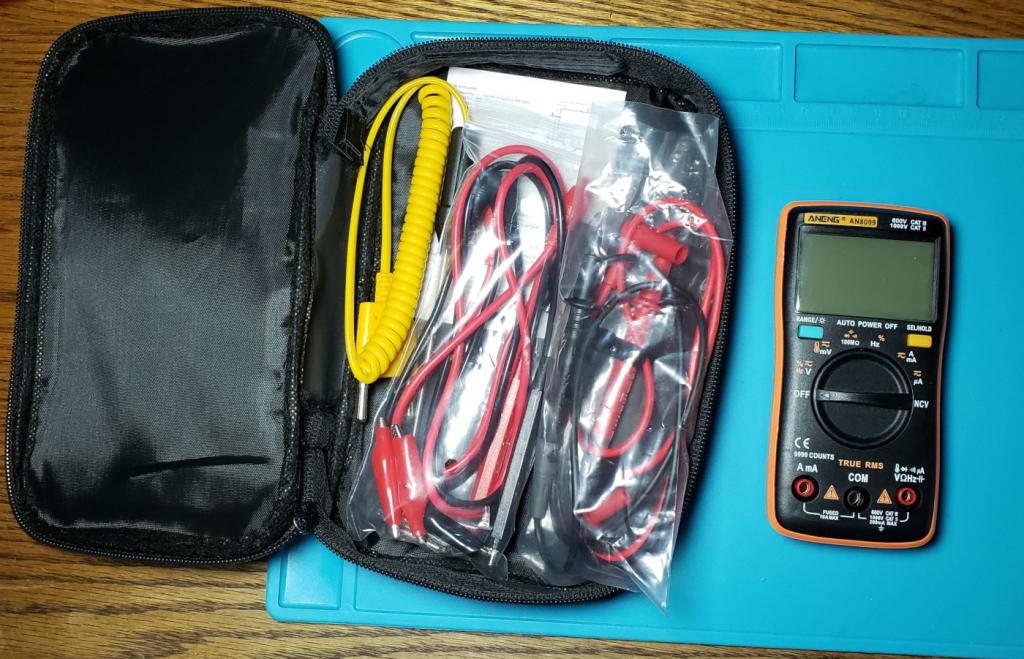
I just picked up an Aneng AN8009 DMM as an upgrade to the cheap, cheap (but surprisingly OK) Circuit Specialists branded MY-68 I’ve had as my home on-desk approxometer for ages. It’s a nice meter for $30ish, and can be readily hacked to improve its performance. I tend to point people to mid-range Uni-T DMMs when they asked for decent hobby meters, but now I might switch to one of these plus one of those little $10 Atmega328 based component testers cloned everywhere for ~$10 as basic electronics lab instruments.
I haven’t generally bothered to own nice test equipment because I can just roll into campus to use legit lab equipment on those occasions when I need something fancy — during the semester I work out of a lab full of Tek MDO3012s scopes and BK 5492B bench meters. Plus, I keep a few specialty instruments for edge tasks like legit name-brand testers for house wiring, and one of the aforementioned Atmega 328-based component testers which is way better for capacitor/transistor/diode testing than any DMM I’ve ever seen (see pictures below for examples of one in use). For some reason I recently caught the itch to grab something nicer for my desk anyway.
I spent a few days rabbit-holed in the EEVBlog obsessives’ DMM reviews, and settled on the Aneng AN8009 due to surprisingly good specs and reviews for a O($30) meter, cute little package, and the detail that Jacken already figured out how to improve the ground decoupling to make it significantly better. Further, when I went to check for what kind of fuse I needed to have around for inevitable fuckups, I discovered Ed Nisley who always seems to be in to the same silly shit I am, but more so, had also recently decided to pick one up, which is a good sign (he documented for the internet that it uses 3.6×10 mm fuses, which was helpful). I went for the same “Cheap axial lead fuses off of eBay” approach he did, they’re …almost the right values and they’ll arrive …eventually. The tiny fuses add to the general “I’m not sure this thing is safe for large-signal measurements” feel, but that’s not what I want it for.
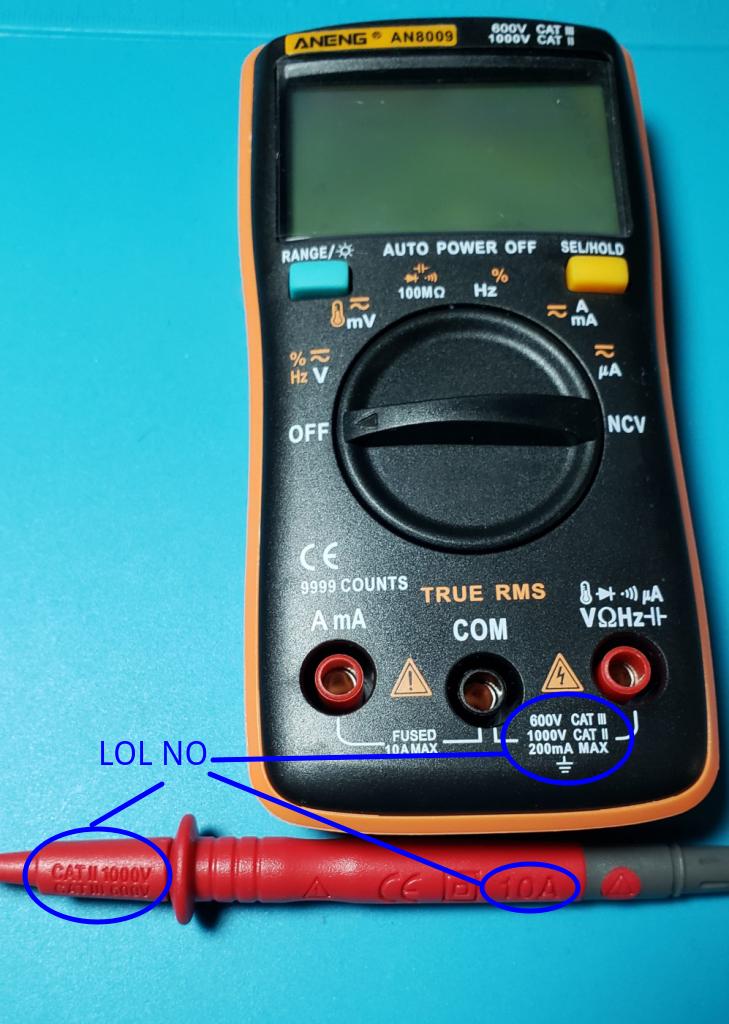
As for the package itself, it comes with a cheap case, two sets of test leads; one fixed OK set, and one set of multi-functional screw-in garbage. I’d have preferred better plating and silicone insulation on one set to the second bundled trash. It also includes a decent Type-K thermocouple probe, which while not the fanciest temperature sensor will (somewhat slowly) cover the entire range of things I’m willing to be close enough to to test with it.
The continuity sensor is delightfully responsive, which is a big plus for debugging work. The readings from reasonably-known test sources (bench PSU, cheap DDS function generator, sample components, etc.) mostly check out within tolerance, though it seems to read a little high (and quite slowly) on capacitors, and out of the box everything settles annoyingly slowly (fixed below). I’m impressed with the high resistance range, 10s of MΩ work fine. I’m not sure what the upper limit on the diode test is (The manual just says “✓”); I threw a ~3.1V UV LED from my parts bin at it and it lit but read 2.9V, so I’m guessing it tops out around 3V from the 2xAAA supply. The NCV tester is present, but not nearly sensitive enough to use like a NCV safety stick to ensure circuits are cold before you open panels. I’d happily trade NCV even for spreading out the resistance/diode/continuity/capacitor function onto different dial positions to save button presses.
In other notes, it has a decent integral kick-stand that latches shut, screen legibility across angles is adequate-not-great, and it gives bogus readings if you do stupid things like try to read RMS AC voltage of square waves or a single-digit Hz sinusoid.
As for hacks, I put 0.1, 1, and 10µF 0805 caps on the unpopulated decoupling pads and a 4.7µF 0805 in place of the probably-under-spec one on the vref chip (I have no idea what actually came installed on mine, I launched it while trying to measure it). They’re nominally muRata caps (from the book of 0805 caps I impulse bought from eBay last time I needed a smd cap) but measured out fine. I also added a little solder to the bottom pin of the vref package while I was in there, it looked like a potentially dry joint.
It was still settling slower than I’d like, so I followed the other advice, found an 820µF low-ESR cap (based on the parts bin compartment, I’d guess left over from rebuilding my Mac LC’s PSU), and swapped that in, resulting in significantly faster settling times. It’s sort of comically oversized, but there’s a large empty cavity next to the battery compartment, and I heat-shrinked the leads to make sure it didn’t move and cause trouble.
One of these days I’ll drop real money on a truly good meter (like a Fluke 287) and/or give in and buy a scope for home (which is actually in the same price range, the likely suspects for me are mid-range hack-able Rigols), but the state of cheap meters has improved enough in the last few years that there’s no reason not to have something decent around.

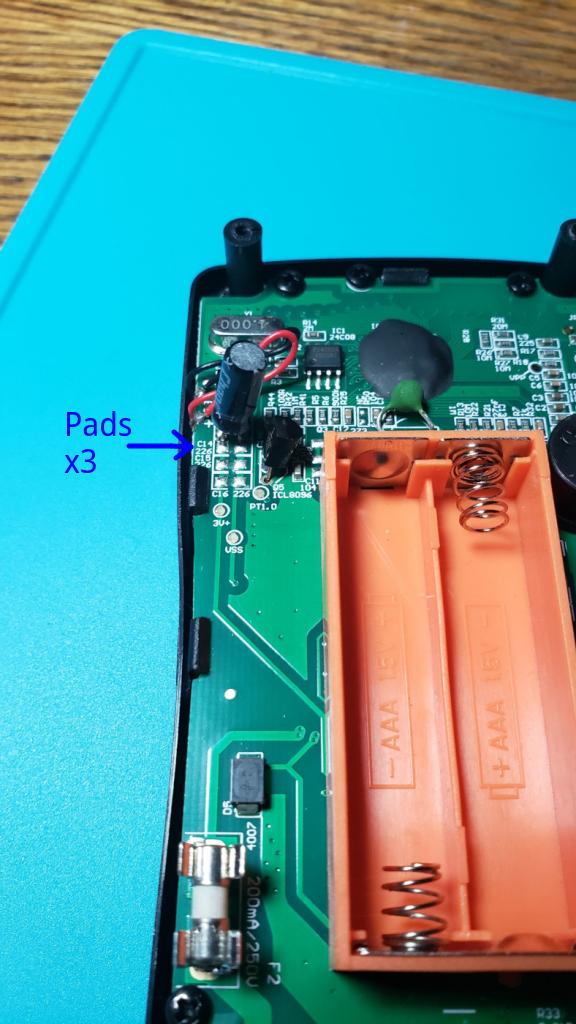
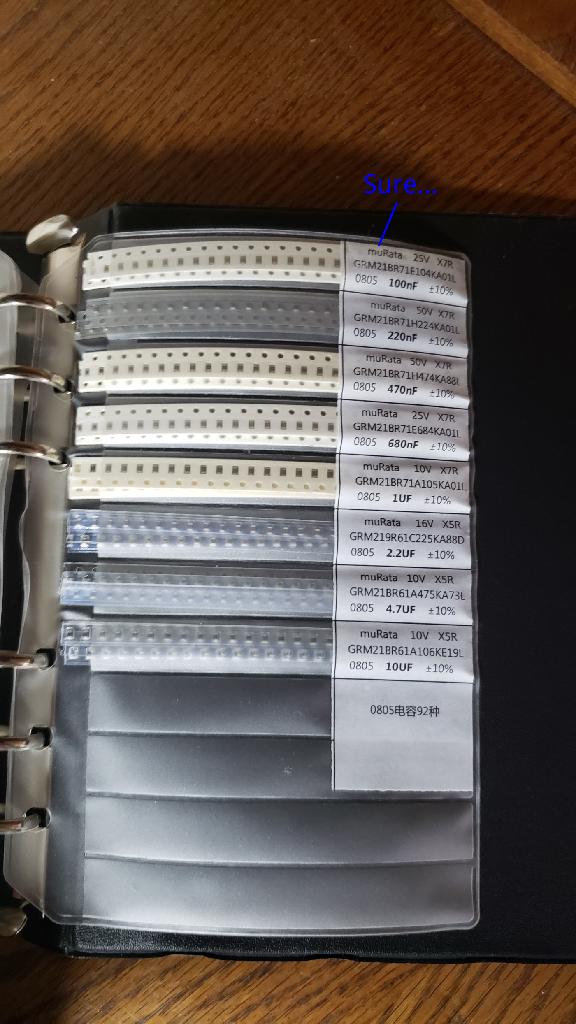
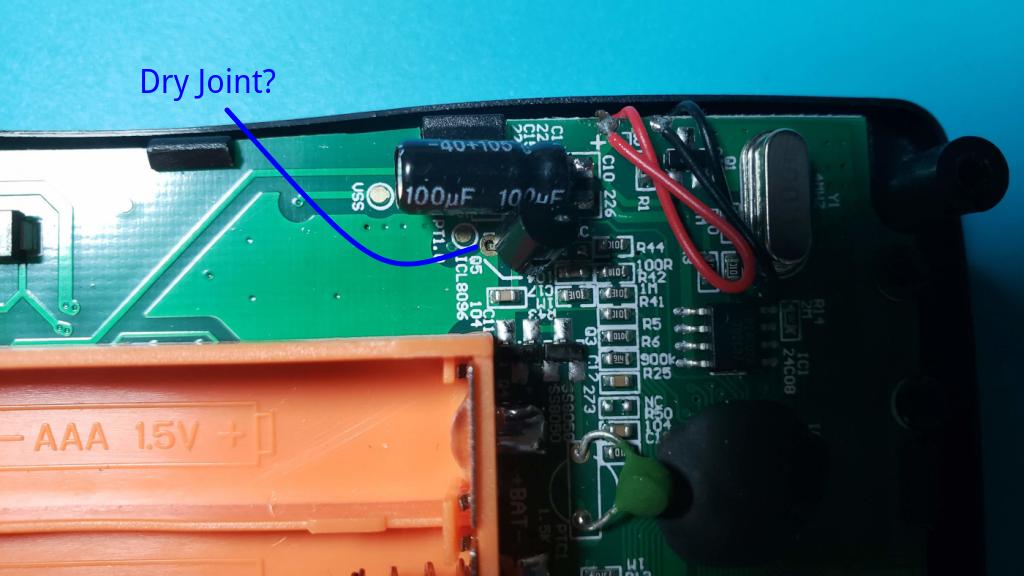
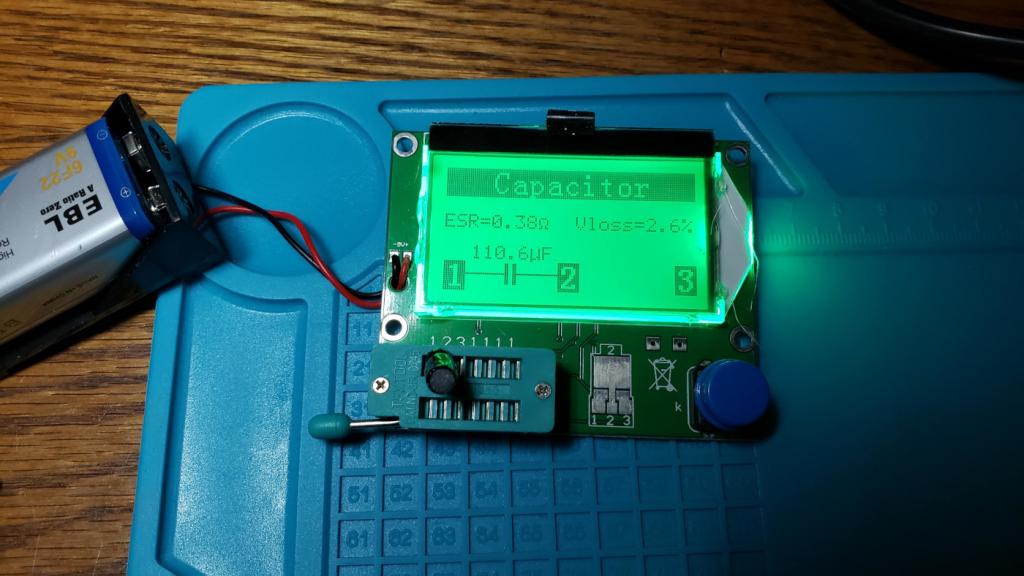
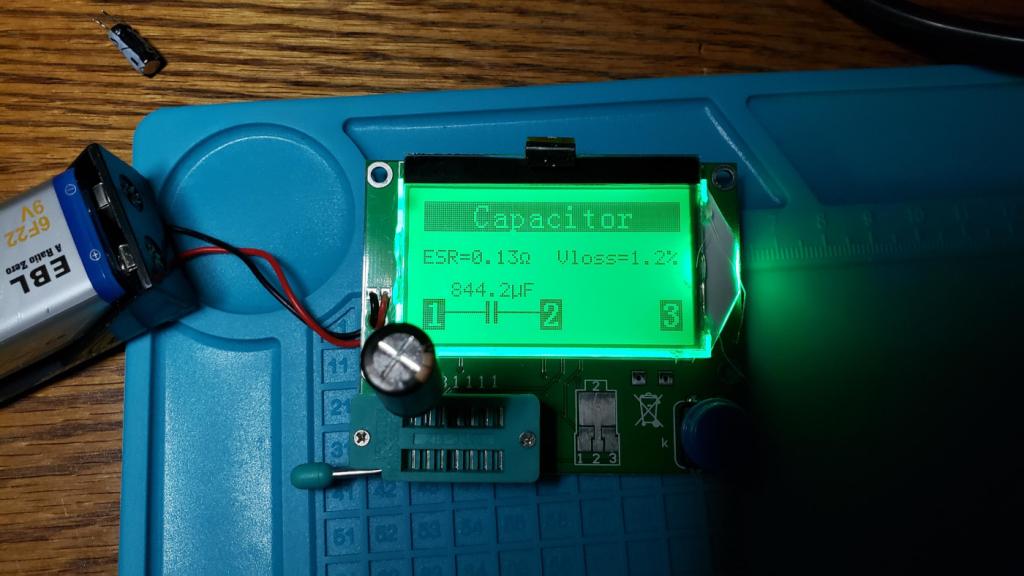
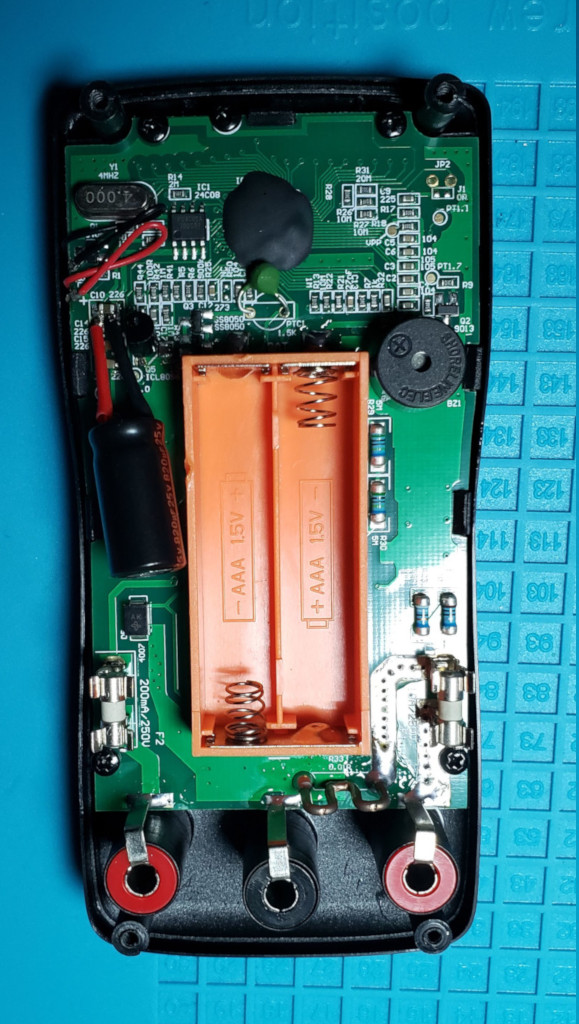

How i can change the backlight auto-off timer for AN8009?
I haven’t seen any user-facing way to alter the timeouts.
I think most of these similar meters use exactly the same chip with different ROM parameters, so probably if you had the appropriate programmer device and knowledge it could be updated, but I haven’t heard of any public documentation for how.
Hi, is there any way to modify/hack the ROM, and so this AN8009 can generate the Square Wave output as on the AN8008?
I’m not aware of anyone having done anything like that, and I suspect whatever IC is under the epoxy blob driving these things may be semi-custom ASICs, or contain mask ROM, or feature fuses, or something like that set at the factory.
On the 10A socket is there a way to increase layout for better conduction of current?